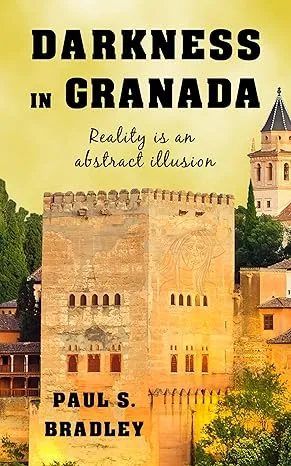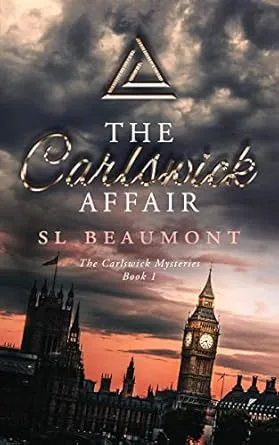Affordable Manuscript Assessment
Over fifteen years of industry knowledge
Free Sample Manuscript Assessment
Receive a free assessment of the first 2,000 words, including a concise editorial report highlighting initial strengths and areas for improvement.
Comprehensive Editorial Report
Receive in-depth assessment and feedback on your manuscript’s structure, pacing, character development, and overall coherence.
Follow-Up Clarifications
Submit follow-up questions to discuss and clarify editorial feedback, ensuring you fully understand how to enhance your manuscript.
Enhancing Marketability
Gain high-level suggestions aimed at improving your book’s appeal and accessibility, with recommendations on style, tone, and narrative voice.
Cost-Effective Feedback
Access professional insights at a price that won’t break the bank, helping you identify what’s holding your manuscript back and create a clear path forward.
Video Consultation
Enjoy an hour of face-to-face time with your editor over video to discuss your manuscript in detail and chart the best way forward.
Cost Calculator
We use a simple pricing system based on the cost of:
$20 per 1000 words.
Total Price:
The price we quote is fully inclusive and will be the price you will pay to get your book edited. There are no hidden costs. The cost is typically split into two with half due on submission and the rest on completion.
Some Books We Have Edited
Submit for Manuscript Assessment
To start the process, simply complete the form below and we will be in touch shortly to discuss your book and requirements in more detail.
What You Get
Established in 2007, our manuscript assessment service provides unrivaled support to providing editorial guidence for you manuscript.
We guarantee quality, exceptional customer service, and affordability.
Your privacy is paramount; we promise 100% anonymity and will never discuss your book with anyone without your written permission.
Our testimonials from satisfied authors speak to the impact of our work on their books.
Here’s what you’ll get when you work with Gary Smailes at BubbleCow:
You can also learn more about the process from start to finish.
Free Sample Developmental Edit
Experience the quality of my service firsthand with a free edit of the first 2,000 words of your manuscript. This includes both developmental and line edits, accompanied by an insightful editor’s report. This sample not only shows you my thorough editing process but also highlights the value and expertise I bring to every project.
Editorial Assessment
Do you have a rough draft that you know isn’t quite there yet, but you’re not sure what needs fixing or how to move forward?
That’s where a manuscript assessment comes in providing a clear, big-picture evaluation of your book as it currently stands.
You’ll learn what’s working, what’s holding the manuscript back, and, most importantly, how to address these issues so you can keep moving in the right direction.
This service is ideal once you’ve completed your “draft zero” but still feel stuck, uncertain, or simply eager for professional insight. It’s a cost-effective way to diagnose structural problems, identify character or plot weaknesses, and see where your writing shines.
With an expert reading and practical feedback in hand, you’ll be ready to refine your manuscript confidently—whether you dive into a thorough rewrite on your own or later opt for a more in-depth developmental edit.
A manuscript assessment helps you see the forest for the trees, giving you a roadmap to transform your rough draft into a compelling, polished book. It’s the perfect choice if you’re seeking clarity, motivation, and informed guidance at a crucial stage of your writing journey.
The service will assess the following:
Overall Structure and Organization
A manuscript assessment begins by examining how your material is arranged and whether it flows logically from one point to the next. This includes analyzing the layout of chapters or sections (for nonfiction) and the arrangement of scenes or story arcs (for fiction).
What an editor looks for:
- Logical progression: Does each chapter or section build on the previous one, creating a coherent path for readers to follow?
- Strategic organization: Are the key themes or topics introduced and revisited in a way that supports the core message or story?
- Structural clarity: Can readers easily identify the overarching purpose and direction of the manuscript, whether they’re reading a complex novel or an in-depth nonfiction piece?
For example, in a memoir, the editor will check if each significant life event is placed appropriately within the narrative and whether any time jumps or flashbacks fit logically.
In a business book, the assessment might focus on how effectively each chapter addresses a key concept or solution, ensuring the material builds on itself in a meaningful way.
Meanwhile, in a fiction novel—whether that’s a thriller, fantasy, or romance—the editor would examine how well the plot arcs flow from one chapter to the next, whether the pacing keeps readers engaged, and if character development aligns with the overall story trajectory.
Plot, Pacing, and Tension (Fiction)
In fiction manuscripts, the editor will look at how events unfold and whether they engage the reader’s curiosity and emotions. This means reviewing the sequence of the main plot and subplots, assessing how quickly or slowly the story progresses, and ensuring tension is maintained to keep readers turning the pages.
What an editor looks for:
- Coherence of the main storyline: Is the central conflict or premise clear and compelling? Are there any plot holes or inconsistencies that weaken the story’s impact?
- Subplots and their relevance: Do the secondary threads add depth to the main plot, or do they distract from the central narrative?
- Pacing issues: Are there sections that feel too rushed or too slow? Does the story maintain sufficient momentum from beginning to end?
- Tension and stakes: Does the narrative keep readers on the edge of their seats, eager to find out what happens next? Are the stakes high enough to justify characters’ actions and emotional responses?
For instance, if a thriller starts strong but slows down significantly in the middle, the editor might suggest rearranging scenes or trimming certain passages to maintain excitement. Similarly, if the climax arrives too late or too early, the editor could recommend restructuring chapters to better balance the buildup and resolution.
Character Development (Fiction)
Believable, engaging characters are at the heart of any strong fiction manuscript. An editor assesses each character’s traits, motivations, and growth throughout the story, ensuring they feel like real people whose journeys resonate with the reader.
What an editor looks for:
- Consistency and depth: Do characters behave in ways that align with their established backstories, personalities, and circumstances? Are they well-rounded instead of clichéd or one-dimensional?
- Character arcs: Do they grow or change over the course of the narrative? Are these transformations meaningful and tied to the story’s conflicts?
- Dialogue authenticity: Does each character speak in a distinctive and appropriate voice? Does the dialogue serve to reveal character, advance the plot, or both?
- Relationships and dynamics: How do characters influence one another? Are interactions believable, and do they contribute to the story’s tension or emotional resonance?
For example, if a protagonist starts as a timid individual and gradually learns to assert themselves by the climax, the editor looks for evidence of this growth in their decisions, dialogue, and inner monologues. If the change seems sudden or unjustified, the editor may recommend adding scenes or details that pave the way for a believable transformation.
Narrative Voice and Style
The narrative voice and writing style define the personality of your manuscript. A captivating voice can draw readers in and keep them engaged, while a mismatched or inconsistent style can cause confusion or dilute your message. Editors evaluate whether the voice and style are suited to the genre, the subject matter, and the audience’s expectations.
What an editor looks for:
- Consistency: Does the narrator or author’s voice stay true to itself from beginning to end? Are there abrupt changes in style that break immersion?
- Suitability: Does the style fit the genre? For a gritty thriller, a darker or more concise voice might be appropriate, whereas a lighthearted romance might flourish with a playful, lyrical tone.
- Readability and engagement: Is the language clear and engaging, or does it feel clunky and overly complex? Is the style too simplistic for a sophisticated subject, or vice versa?
For example, if your manuscript is a young adult fantasy novel, the editor will look to see if the writing style is relatable to teenage readers but still evocative enough to paint a vivid magical world. In a formal academic text, they’ll ensure that the language maintains an appropriate scholarly tone without losing clarity or accessibility.
Tone and Audience Alignment
Tone refers to the emotional coloring or overall mood of your writing, while audience alignment speaks to how well your content and approach match the expectations of your intended readers. An editor will ensure that the tone complements your theme or subject matter and resonates with the people you want to reach.
What an editor looks for:
- Appropriateness: Does the tone suit the content? For a humorous memoir, is it consistently light and entertaining? For a serious historical analysis, does the tone remain respectful and scholarly?
- Audience expectations: Are you using language, references, and styles that your target audience will understand and appreciate? Are there any cultural or contextual elements that need clarification or adjustment?
- Consistency: Does the tone remain steady throughout the manuscript, or does it shift in ways that may confuse or alienate readers?
For instance, if you’re writing a parenting guide aimed at first-time parents, your tone should likely be warm, supportive, and empathetic. An overly formal or clinical tone could create distance. On the other hand, a comedic novel about a dysfunctional family should maintain its lightheartedness or satire, even when tackling more serious moments, to stay true to readers’ expectations.
Clarity and Cohesion
Ensuring your manuscript is cohesive means each section or chapter logically connects to the next, and the central ideas or story threads are presented in a clear, organized manner. An editor evaluates how effectively your writing flows from one point or scene to the next, checking for any confusing or repetitive passages.
What an editor looks for:
- Logical progression: Do ideas, topics, or narrative events follow a natural sequence?
- Transitions: Are the shifts between chapters, sections, or scenes smooth, or do they feel abrupt?
- Avoiding repetition: Is the same information or concept repeated unnecessarily? Is there too much backstory or explanation that slows down the pace?
For example, in a nonfiction health and wellness book, an editor will look at whether each chapter offers new insights that build on the previous one, rather than rehashing the same facts. In a novel, they’ll check if transitions between chapters flow naturally so that the reader isn’t jarred by abrupt changes in time or location.
Setting and World-Building (Fiction)
The setting or world in a fiction manuscript can be as important as any character, lending depth, mood, and authenticity to your story. An editor assesses whether the environment is vividly portrayed and if it contributes meaningfully to the narrative.
What an editor looks for:
- Believability and detail: Is the world described in a way that feels real, whether it’s a historical era or a fantastical realm?
- Consistency: Are the rules of this setting clear and adhered to throughout the story? Are there any contradictions in the established environment, culture, or magic system?
- Integration with plot and theme: Does the setting enhance the story’s atmosphere or conflicts? Does it play a role in shaping characters’ goals and challenges?
For instance, in a dystopian novel, an editor would check if the oppressive society is fully realized—does the environment consistently reflect the harsh conditions and societal norms? If your story takes place in a small coastal town, they’ll look for sensory details (like the smell of salt air or the sound of crashing waves) that transport readers to that location.
Structural and Developmental Suggestions
After evaluating the key elements of your manuscript, an editor will provide constructive feedback on how to strengthen its overall structure and content. These suggestions might range from reordering chapters to expanding certain character arcs or themes.
What an editor looks for:
- Reorganization of content: Would the manuscript benefit from rearranging chapters, scenes, or sections for better flow or impact?
- Expanding or trimming material: Are there areas that need more development to fully engage the reader, or places where unnecessary detail should be removed?
- Enhancing key arcs or arguments: For fiction, do character arcs need additional depth? For nonfiction, is there more evidence or analysis needed to support the main thesis?
For example, an editor might suggest moving a pivotal scene to an earlier chapter to grab readers’ attention, or advise cutting a subplot that doesn’t advance the main conflict. In a nonfiction manuscript, they may recommend shifting the order of chapters so that foundational concepts are introduced before more complex ideas.
Editor's Report
A key part of a manuscript assessment is the editor’s report. This report focuses on the bigger picture. It contains a comprehensive overview of what’s working, what’s not, and where you can direct your energy to make meaningful improvements to your draft.
Over the years, we’ve developed a clear and detailed structure for our manuscript assessment reports to ensure consistency and thoroughness. Each assessment typically includes two main sections: general thoughts and chapter comments.
In the general thoughts section, the editor highlights any significant issues that stand out after a close reading of your manuscript. These could relate to structural flow, character development, pacing, world-building, or other overarching elements identified in our assessment criteria. We explain why these issues need to be addressed, where they appear in your draft, and suggest at least one strategy or solution for each.
For example, if we find the opening chapters move too slowly, we’ll examine whether the issue stems from lengthy exposition, a missing inciting incident, or simply starting the story at the wrong point. A slow start risks losing a reader’s interest early on, so in the editor’s report, we provide concrete recommendations to help you engage your audience sooner.
In addition to these overarching insights, the report features chapter comments that drill down into each section or chapter. This micro-level feedback points out specific strengths, such as compelling dialogue or a vivid setting, and identifies areas needing improvement, like unclear transitions or underdeveloped subplots. Taken together, the general thoughts and chapter comments paint a clear picture of where your manuscript stands and how to elevate it.
The purpose of the editor’s report is to empower you with actionable guidance. We don’t just say “fix this”—we explain why it matters, what potential solutions look like, and how those solutions serve your overall goals for the book. Many authors find that having these insights at hand helps them stay motivated and focused during the revision process, offering both the ‘big-picture’ perspective and the finer details necessary to shape their next draft.
Uncompromising Support
Our support begins the moment you submit your book and continues indefinitely.
Continuous Email Support
Our email support is available for any questions you may have about editing, the process, publishing, or writing in general. We aim to provide timely and comprehensive answers to ensure you feel supported throughout your journey.
Personal WhatsApp Access
You will have access to your editor's personal WhatsApp number, allowing you to receive support throughout the editing process. This direct line of communication ensures that any concerns or questions are promptly addressed.
Lifelong Guidance
We believe in building long-term relationships with our clients.
You have lifelong support for all questions related to editing, publishing, and writing. Having worked with thousands of writers, we have the experience and knowledge to help you navigate any challenges you may encounter.
At BubbleCow, we see our relationship with you as a long-term commitment, not just a one-book relationship. We are dedicated to supporting your writing career and helping you achieve your goals.
The Process
Our process is designed to be straightforward and supportive from start to finish. Here’s how it works:
Initial Contact:
You can reach out to us via a simple form on our website, email or through a WhatsApp chat, providing your name and a brief description of your book.
Follow-Up Email:
After the initial contact, you'll receive an email from Gary Smailes. After a discussion about your book, the first best step is a free sample edit.
Sample Developmental Edit:
If you request it, Gary will complete and return a sample developmental edit.
Submission
Once you are happy, you can submit your manuscript in Word format. Payment is split into two, the first invoice will be sent. Upon payment, we will begin the editing process. You'll receive an email outlining what to expect and a delivery date for the completed edit.
Progress Updates:
Throughout the editing process, we provide regular updates via email or WhatsApp to keep you informed of the progress.
Completion:
Once the edit has been completed it will be returned and the second invoice will be issued.
Ongoing Support:
We offer ongoing support ensuring you have the guidance you need to move to the next phase in the publishing journey.





